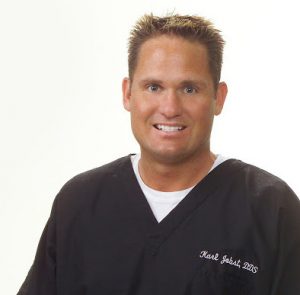It is unfortunately the case that many patients in need of dental care put off seeking treatment for far too long, hoping that the discomfort they are experiencing will merely fade away with the simple passage of time. Obviously, it is a rare circumstance in which “waiting it out” alleviates the underlying cause of the problem, and a delay almost always results in the problem becoming far worse. Proper preventive care is simply in everyone’s best interest, yet many people still fail to get the care they should. When this happens, it is important to understand what steps to take and how to go about correcting a problem that should have been easily prevented.
It is important to first ask the question most frequently pondered by dental professionals: Why do people do this to themselves when they could easily address the problem in its early stages so it does not devolve into an issue that is more difficult to correct? After all, dental care is readily accessible and quite affordable, but that does not mean that the existing misconceptions do not play a role. There is a fairly sizable portion of the population that assumes that a lack of dental insurance makes proper care impossibly expensive and who therefore avoid the dentist for as long as possible. That is, of course, until a minor issue devolves into a major one that requires immediate care.
Options for Addressing Complications
Perhaps the most common complication experienced by those who avoid seeking dental care is an infection caused by an abscessed tooth, resulting in a painful experience that requires immediate medical attention. According to Murziline Parchment, an oral infection can be particularly dangerous if the infection spreads from the mouth given its proximity to the brain. In the event that an individual experiences a painful toothache accompanied by swelling, it is best to seek immediate care and to avoid any further delay. A doctor will likely prescribe antibiotics to help clear the infection and will then determine an appropriate course of action to correct the issue.
This is where the avoidance strategy ceases to be sensible, as a major problem can never be caught early. If addressed before it devolves in this way, the cost to prevent the issue would be far less than the cost to correct the issue, so it is in the long term that avoiding dental care incurs far greater costs.
Cost is not the only issue, however, as the corrective options may be limited. If the infection has resulted in significant decay, it may not be possible for even the most skilled endodontist to save the tooth. The gap left by an extracted tooth can cause other teeth to shift and may alter the appearance of the patient’s jawline and facial features, so it is often necessary for an implant to be placed in the space where the tooth had to be extracted. While dental implants are available and are certainly a viable option, the fact remains that most people would prefer to keep their natural teeth whenever possible.
Preventive Care Is Always Best
With or without dental insurance, preventive care procedures are quite affordable for the overwhelming majority of the population, even those who believe that dental care does not fit in their budget. The clear benefit of preventive care is the fact that this type of care ensures that major issues do not suddenly interfere with an individual’s life by requiring immediate attention and costly corrective care. It should be pointed out that not only are the corrective procedures costly, but there is a significant opportunity cost involved as well. An abscessed tooth may be so painful that it limits an individual’s ability to work and will require the individual to take time off in order to ensure that the issue is addressed in short order.
It is for these reasons that patients should look at regular cleanings and checkups as a necessary strategy for prevention and an investment that protects against dental issues that are painful and costly. It may be hard to convince those without dental insurance to adopt this long-term perspective, but it is simply the most sensible option available.
 Dentistry has surely come a long way through the ages of medical and scientific technology. With the help of brilliant minds, we have seen methods of dentistry change. Karl Jobst DDS is a fitting example of what a cutting-edge, modern dentistry is.
Dentistry has surely come a long way through the ages of medical and scientific technology. With the help of brilliant minds, we have seen methods of dentistry change. Karl Jobst DDS is a fitting example of what a cutting-edge, modern dentistry is.